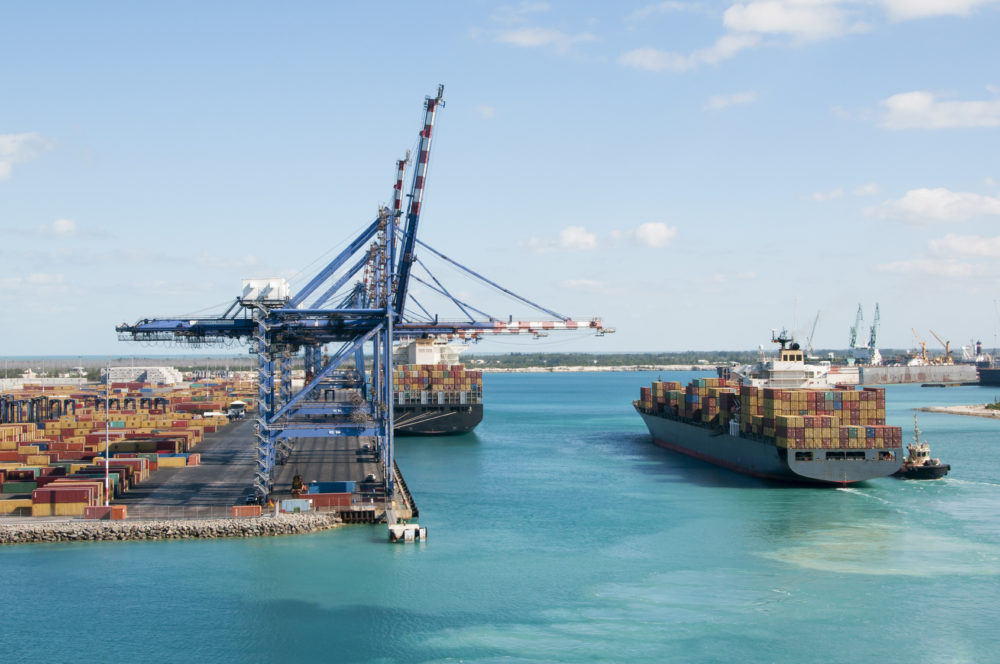Innovations in the marine industry are subject to numerous articles and press releases, and are generally interested in large Terminal Operating System (TOS) terminals. Next to these large investments, small and medium-sized terminals (SMTs) with their low investments are perceived as an alternative that may be of interest to holders of TOS and SMT suppliers.
WHAT MAKES REQUIREMENTS FROM SMTs SPECIFIC?
MORE FLEXIBLE TURN-KEY SOLUTIONS
SMT’s treatment requires specific requirements to be met. Implementation of TOS requires consideration of constraints:
- Budget is of course very often proportional to volumes and turnover;
- Staff availability to design new processes or even to describe existing pratice is scarce
- Local environment (partner’s processes, layout of terminals or vicinity, congestion…) might introduce constraints that SMTs have to accommodate, regardless of their own benefits.
So SMTs can afford to make some changes, but not all. Thus, SMTs’ TOS should adjust its configuration to existing processes and business practices, in a short amount of time.
BUSINESS PROCESS EXPERTISE
SMTs show strong willingness to change and improve, but they need to do so with little investment, and limited impact. Not only do they need pre-configured software, but they also need a provider who comes with expertise in terminal management to help spot areas for improvements, and to implement them rapidly.
SIMPLE AND ROBUST HARDWARE CONFIGURATION
SMTs cannot afford expenditure required for complex and multiple hardware and software configuration. They cannot afford to have many IT staff (sometimes they don’t have any) to look after it. Thus, infrastructure
as well as software configuration must be simple, easy to operate, from remote locations, and very robust.
WHAT MAKES A SYSTEM A PARTICULARLY GOOD FIT FOR SMTS?
HARDWARE INVESTMENT AND OPERATIONS
It has to operate on very robust computers, with low TCO, and high availability even though it is not always configured in high availability mode. Operating Systems have to be well controlled and easy to operate, so that they can be handled by a single person, or even better, handled by a provider from a remote location, with the help of a local operator.
In a perfect world, if data communication quality were good, this system should be operated on a cloud basis, so that there are no system operations to perform locally.
SOFTWARE SIMPLICITY
Software can be very open and customisable, but the more parameters you have, the more time you need to invest in defining your own rules and processes, and most importantly the more effort someone will have to put in to adapt the software to your needs. A TOS for a SMT should allow your own people to understand its concepts and parameters in less than 3 weeks. It is very likely that the local environment cannot be changed easily, or cannot be changed at all. So, the system must be able to adjust to local practices and adapt to existing data flows or machine to machine interaction.
AND WHAT ABOUT OPTIMISATION?
Operational optimisation is more frequently used nowadays on large volumes terminals, for areas like yard management, vehicles routing and cranes management.This is much far common on small terminals. Indeed, these routines are still relatively expensive to implement and the return on investment is more complex to justify with lower volumes. It also requires implementing technology (VMTs and DGPS) and best practices so that yard inventory is updated in real time and vehicles drivers receive their instructions exclusively through the system. However, when terminals have reached such a level of automation, these optimisation engines
can be connected to any TOS, and lead to even better productivity.
WHAT SHOULD A SMT BE CAREFUL OF WHEN CHOOSING A TOS?
SOFTWARE CAPABILITY
Make sure that most features that you expect to implement on your terminal are already existing in the software. It is recommended to ask the vendor references to check with existing customers if the features are
implemented and in good working order. A vendor for SMTs will typically have the possibility, and the necessity, to develop some features tailored to your specific requirements. However, if the gap is to large,it becomes a risky project.
COMPREHENSIVE SERVICES
Besides traditional recommendations related to software references and company sustainability, vendors should be offering comprehensive services around its software, from installation to training,inclusive of maintenance work and effective client support
TEAM’S EXPERTISE
The vendor team’s expertise is critical and you should make sure that the team is well qualified before signing a contract and you have a good fit with their skills.
Important items to consider are:
- Reactivity
- Capability to deliver on time
- The business skills of analysts as they must be able to understand you from beginning to end, even, though you may not have time to describe all the impacts of your change.
DO NOT ASSUME THE OBVIOUS
Dear SMTs, while choosing a TOS, do not assume that leading or expensive TOS are the best TOS for your terminal. It is necessary to include in your RFP smaller TOS providers who could end up with a more suitable proposal delivering better value in the end. It is also known that innovation comes from small companies, so it could be an opportunity for a small terminal teaming up with smaller providers to deliver a
breakthrough. Technology is not a prerogative of the leaders, breakthrough very often comes from small companies, so there is room for any terminal, whether large or small, to contribute to the continuous improvement of terminal productivity.







